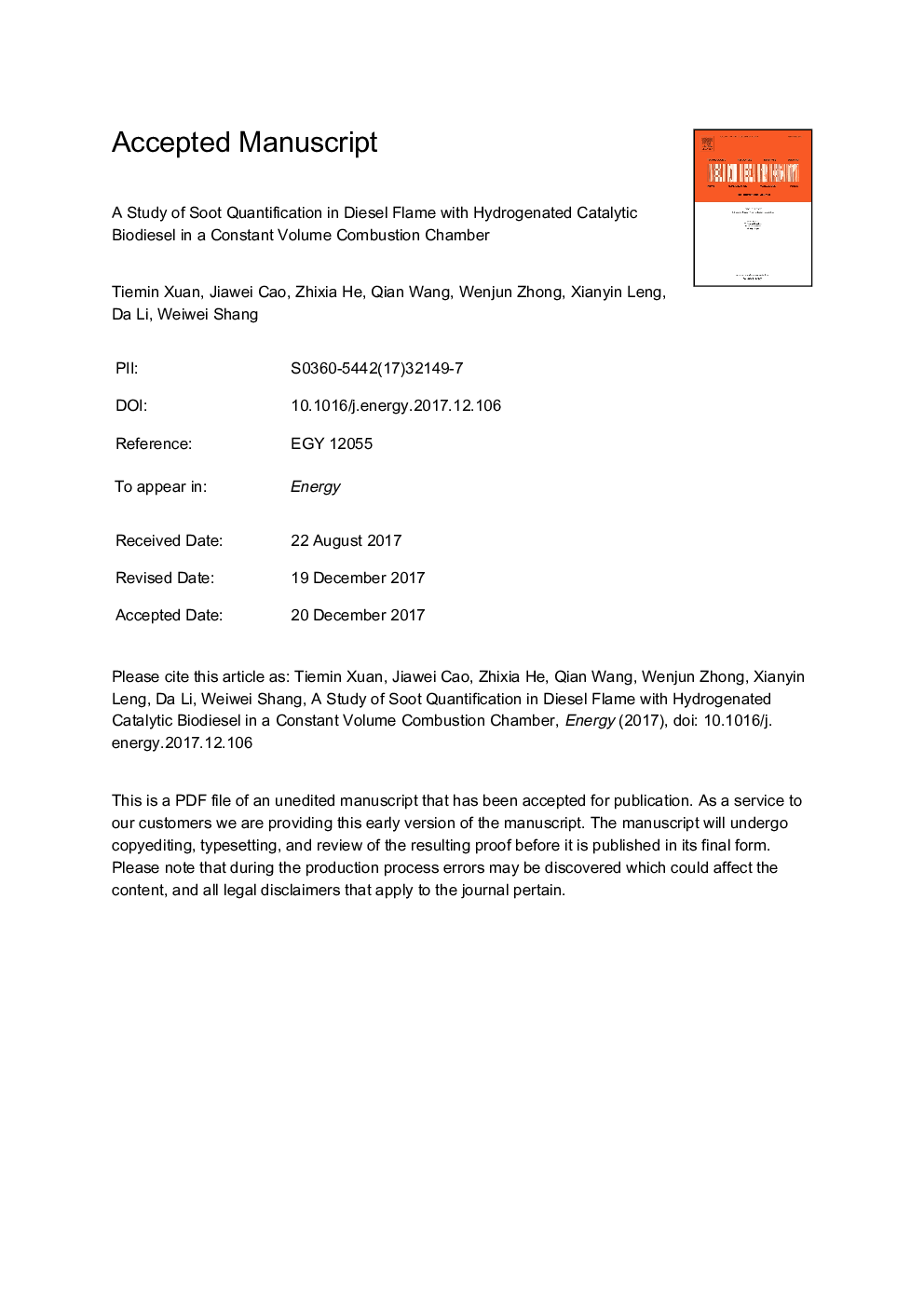| Article ID | Journal | Published Year | Pages | File Type |
|---|---|---|---|---|
| 8072252 | Energy | 2018 | 26 Pages |
Abstract
In this work, diffused back-illumination extinction imaging and OH* chemiluminescence imaging were employed simultaneously to measure the soot production, spray liquid length and flame lift-off length. These experiments were conducted in a high-temperature, high-pressure constant-volume combustion chamber equipped with a common-rail fuel injector with a single 180-μm-diameter orifice. Soot formation characteristics of a blend fuel (B50) with 50% hydrogenated catalytic biodiesel (HCB) and 50% 0# fossil diesel in mass were studied. Besides, the pure 0# fossil diesel (B0) under the same operating conditions was also measured as a reference. Parametric variations of injection pressure (100 MPa, 150 MPa), ambient temperature (770 K, 820 K, 870 K) and oxygen concentration (15%, 18%, 21%) have been performed for each fuel. After analysis, it was found both liquid length and flame lift-off length of B50 are shorter than that of B0. Soot onset time of B50 appears earlier and soot initial location is closer to the nozzle than that of B0. Within the measured optical access, soot area of B50 is larger than that of B0 because of shorter lift-off length, while the difference on total soot production is less noticeable because fuel properties of B0 is more favorable for soot formation.
Related Topics
Physical Sciences and Engineering
Energy
Energy (General)
Authors
Tiemin Xuan, Jiawei Cao, Zhixia He, Qian Wang, Wenjun Zhong, Xianyin Leng, Da Li, Weiwei Shang,
